Are you planning to travel to Ruboni Village? We have great suggestions for transport to Rwenzori area, that will likely work for you. The choice of transportation for your journey will largely depend on factors such as pickup location, group size, and desired level of comfort.
If you have been wondering how to travel to Rwenzori, this article provides you many options that cater for a range of budgets and interests. we start from the most luxury options and end with the extremely budget options. You will be surprised that the lowest price for a transfer to Ruboni can be as low as just 20000 Uganda shillings. Please explore over ten transportation options that you can chose from, organized by pickup location:
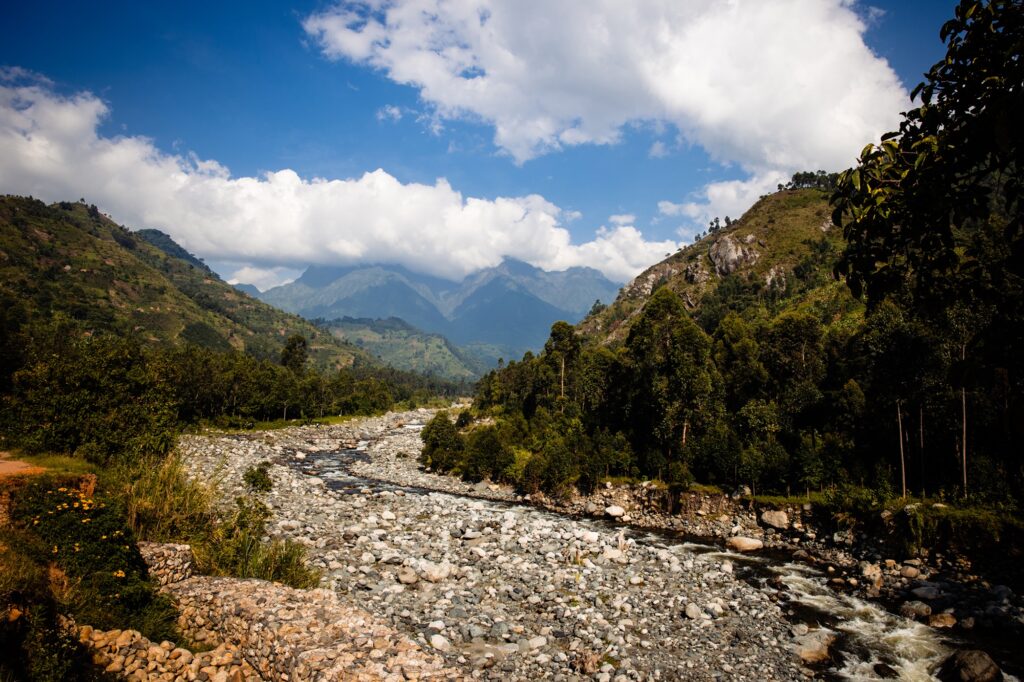
Ruboni village in Rwenzori foothills is approximately 376 kilometers away from Kampala, the capital city of Uganda..
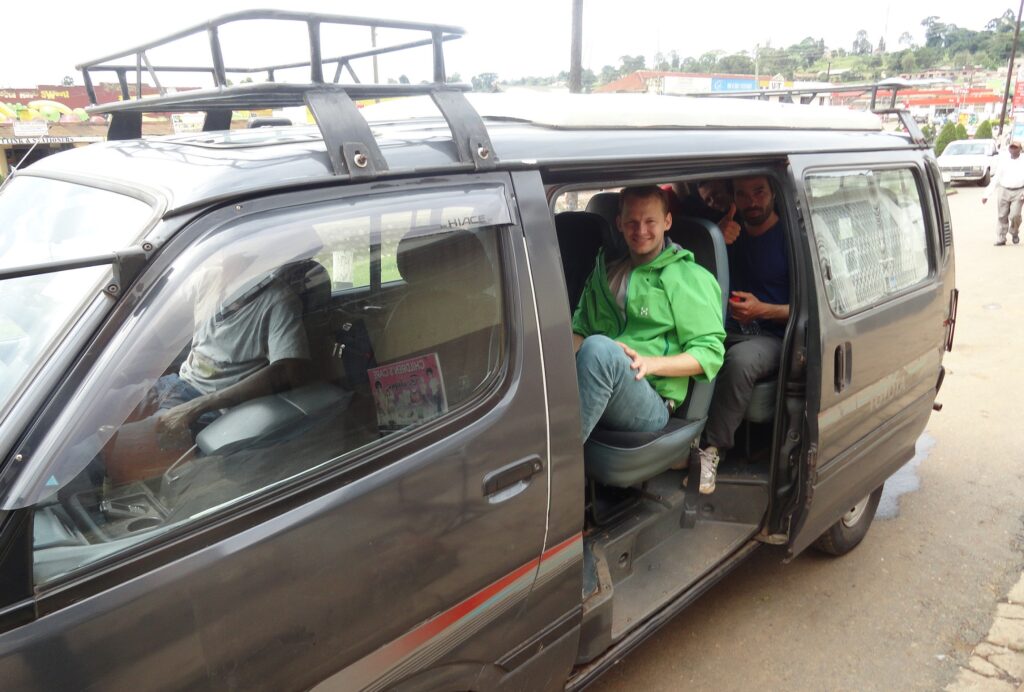
For groups larger than ten, please contact Ruboni Tourism Village. Please note that prices may change upwards or downwards without prior notice.
Bodaboda refers to motorcycle taxis with local drivers. Each can carry one passenger and limited luggage. It’s available for trips from Kasese to Ruboni (28 km). You can also take a bodaboda from Fort Portal (83 km), although this isn’t recommended. The estimated rate is 1200 UGx per kilometer.
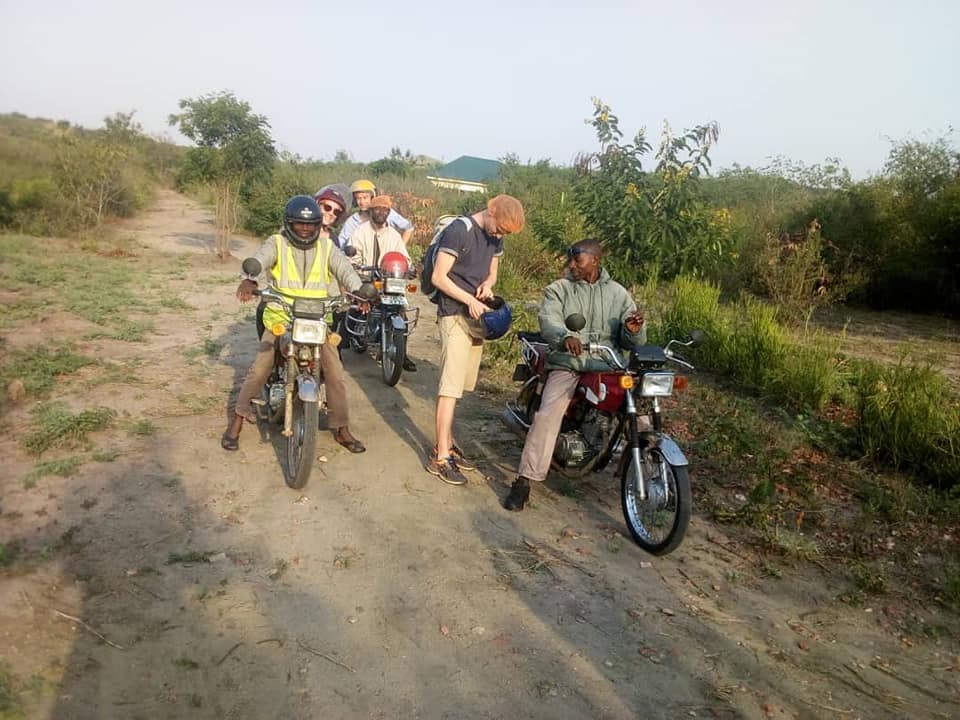
The bus departing from the Link Bus Station will take you from Kampala to the main towns, including Kasese town. On this route, the bus travels along the Kampala-Mubende-Fort Portal-Kasese route. As of now (2024), the average cost of transportation from Kampala to Kasese is around 50,000 UGX which is equivalent to $15. From Kasese, you can then take either a special hire taxi or a bodaboda for a distance of 18-28km, where the previously mentioned prices for these transportation options will apply.
Pro tip: If you opt for a bus ride, it’s better to depart from Kampala early in the morning, preferably before 6 am, to avoid morning traffic.
Shared taxi (Matatu):
This is a small 14-seater van (sometimes smaller), commonly referred to as a Matatu in Kenya. They travel from all over the country, connecting big cities. However, due to the low level of comfort, they are not recommended for long distances. They can get very full, as they are shared between many people. If you still would like to have this local experience, search for cars marked by a line or dotted strip with a big (T) somewhere on the body. The pricing varies, but these are the cheapest options after bus transport. For planning purposes, estimate around 200 UGX for each kilometer driven. They are common on the Fort Portal-Kasese road or Kasese-Mbarara road.
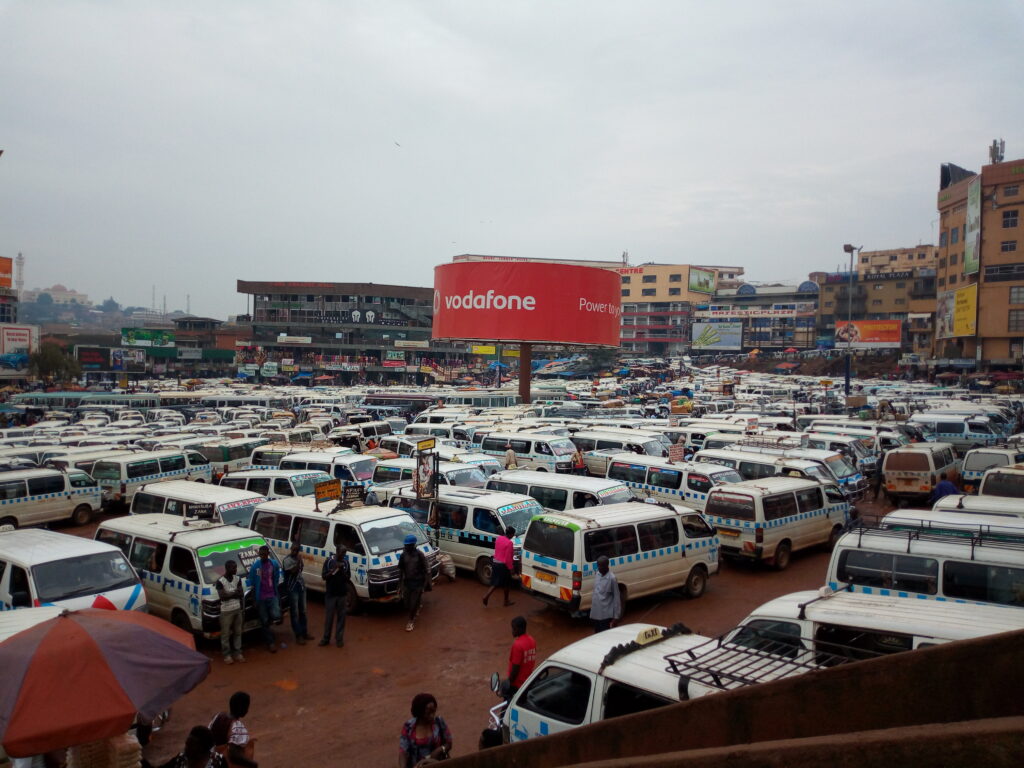
It is also possible to fly from Kajansi, Entebbe or any other small towns of Uganda, to Kasese airstrip. these small planes always fly on schedule but can also be chartered. for prices and more information about these flights, contact Aerolink Uganda and your flight needs will be sorted.
As transport prices may change without prior notice, please contact the lodge before you travel so that you can confirm the transportation trends and prices at the moment. For more information about Ruboni, you can also view the sightseeing map of Ruboni Village here.
In a partnership with Ruboni community camp, we have created an opportunity for you, who may want to use shared scheduled transport and save both the time and some money. scheduled transport is conducted between Ruboni community and Kasese town, on a 28km route.
We have seven trips going every day. four trips from Kasese to Ruboni and three trips from Ruboni to Kasese. At the moment (2024), each passenger is taken at 25000/- on one trip.
the following are the trips and routes per day;
| Time | From | To |
| 7:00am | Ruboni | Kasese town |
| 9:00am | Kasese town | Ruboni |
| 11:00am | Ruboni | Kasese town |
| 1:00pm: | Kasese town | Ruboni |
| 3:00pm: | Ruboni | Kasese town |
| 5:00pm: | Kasese town | Ruboni |
| 7:00pm | Kasese town | Ruboni |
To join the ride, one must book at least three hours before the trip time. This means you can book on the same day when you set off from Kampala.
The scheduled transport option is not only for Ruboni. it serves all accommodations within Ruboni village and starting from Rwakingi up to Mihunga park gate. You can view the map of Ruboni village here to get an idea based on the hotel you have booked. the route involves driving from Kasese up to the park gate.
Originally, there has been a challenge of lack of scheduled transport going to Ruboni. This was hurting the tourism businesses in the destination. we have set this option to mitigate the challenge and enable the guests to travel more easily, cheaply and timely.
This is a partnership with the local taxi drivers. the drivers can be happy to add any other trips required by the guests at no extra cost. for this reason, please don’t be shy to tell us the different times you want to travel, if it is outside the scheduled trips.
It is important o note that, any trip can be scheduled if booked at least three hours before its time. Since night trips can be challenging to arrange, they may attract some little extra money, and they must be arranged during the day time.
Ruboni is a village located in the Rwenzori foothills, a perfect location to get the best Ugandan village experience. The village is drained by River mubuku at the entrance gate to Rwenzori mountains national park in Kasese district. The location is to the west, off fort portal Kasese road. It is 6km from Kasese town and the branch off is at Nkenda electric terminal, 10km on Kasese fort portal road.
Ruboni village is a beautiful jewel tucked in the hills. Entering the village is like paradise with the beautiful mountain views. You’re welcomed by the portal peaks that form the forefront of the Rwenzori Mountains. The road rolls along River Mubuku, passing through small trading centers, homesteads and local household farms with coffee, bananas and small roadside markets. This beauty o the village is accompanied by the friendly people that offer endless smiles and waves as if to welcome you to the magical valley.
Ruboni has a whole range of attractions that will take beyond the time available to every visitor. In just one village, you have over 50 attractions to explore. The forests, the rivers with waterfalls, hill treks, cultural encounters, fresh foods and the rocky river beds that make common site in Ruboni village.
In Ruboni community forest that neighbors Rwenzori Mountains National park, you will be immersed in nature beyond your imagination. With a local experience guide, you will walk this natural haven looking for the different varieties of reptiles where you will be perplexed to view the great Rwenzori three-horned chameleon, the elusive strange horned chameleon and many others all in their natural habitat. In this forest, you can also find primates, unique birds including the Rwenzori Turaco, and a great variety of trees and plants as you cross the magical rivers flowing from Rwenzori Mountains.
The many rivers offer great natural scenarios, rocky beds and rapids. Two river trails offer you the enormous water falls. This is river Ssebwe and river Nyabyayi. I bet very few people have seen the beauty like it lays in these falls. To each of the rivers of your choice, you will trek for close to the whole day exploring waterfalls. These falls and river have a strong cultural attachment. The guide will tell you the local secreted ion the falls and surrounding trees or plants to show how the local people relate to them.
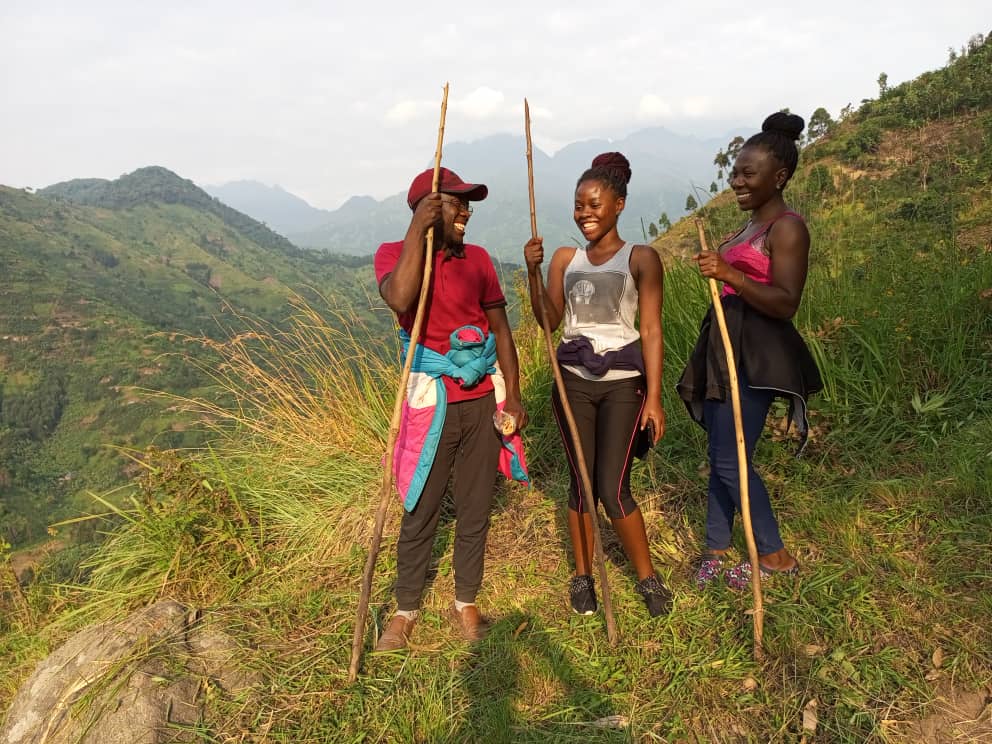
The Ruboni hills take you above the world. While you trek these hills, you will be able to view lake George in the queen Elizabeth plains and Margarita pea, the high mountain on Rwenzori. The hill treks give a good insight of the human settlement and traditional livelihoods in Ruboni village.
The homestead along the rivers, the road networks, the river valleys and parched on the hills showcased the local architecture and way of life of the Bakonzo people. Those who take an overnight on the hill top camps, are able to view both the sunrise in the east and margarita peak in the west at the same time; witnessing the magical moment while the sun trails this snow capped point on the roof of Uganda.
The Ruboni village walk is the true showcase of the Bakonzo life in the mountains. You will learn the traditional ways, but also be able to observe how the locals have perfectly integrate modern life in their traditional livelihoods. It is an opportunity to learn the local traditions,local economies and the social life. The key highlights on this village cultural walk include; visiting the story teller, the traditional healer, the crafts producer, the farmer and the winery, coffee roasting and vanilla farming experiences, going to the crafts markets to buy souvenirs or attending the traditional dances at the community visitors Centre in the evenings
A place to stay at are no longer a challenge while in Ruboni village. Ruboni village has a range of accommodation facilities ranging from luxury, mid-range, budget and shoestring. This way, Ruboni caters for all budgets and comfort ranges. Guests choose from the over 100 beds that are available at the different categories every night. Besides, those who want to camp will easily find the secured camping grounds with or without tents.
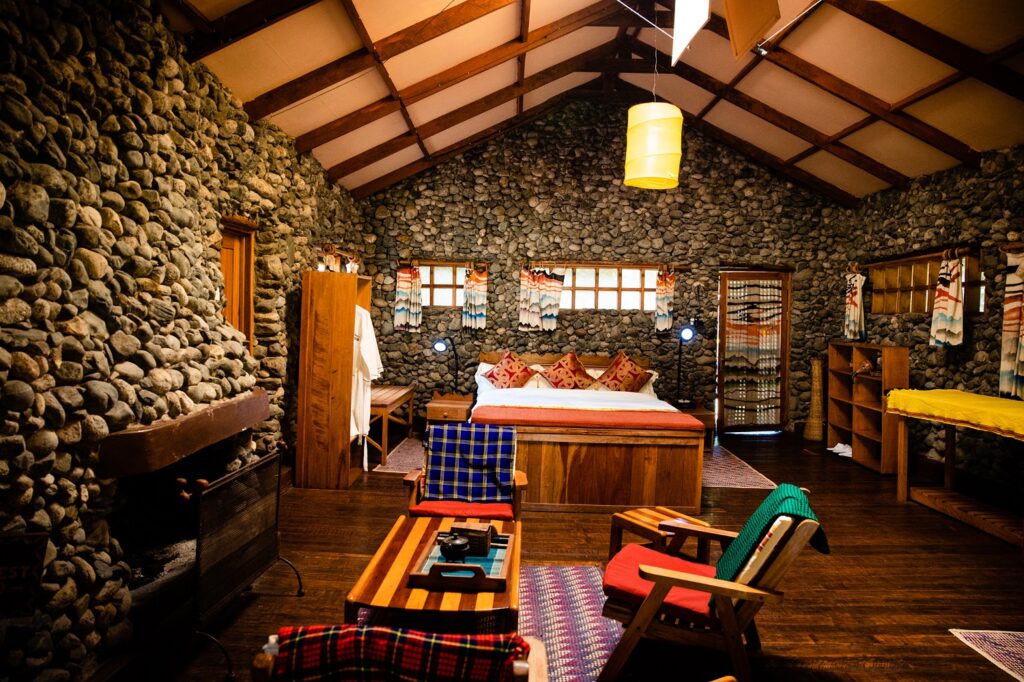
Getting to Ruboni and the transportation is only by road. The distance is 18km from Nkenda electric terminal on Kasese fort portal road or 28km from Kasese town. For easy direction, Ruboni village is on google maps and open street map. The travel is either by car or by Boda-boda for those who wish to travel local at a low level of comfort. Transport is easy to arrange from these two locations. Please note that, public car transport is scarce, so those using car will find it easier with a private hire that is easily found in Kasese or organized by Ruboni tourism village initiative.
How to book Ruboni experience:
Most facilities in Ruboni village are found online. Visitors can easily book on popular platforms such as booking, Air Bnb, social media, google maps, and websites. None the less, you can book through Ruboni Tourism Village initiative, the consortium of all tourism enterprises in the village. to be updates about Ruboni village, you can follow the hash tag #RuboniVillage or any links to your choice activities in the village. The village has no bank or ATM, the nearest being 28km in Kasese town. However, payment is easy, Ruboni village tourism facilities accept credit card payment. Cash payments on arrival are preferred in Uganda shilling, though you may be billed in US dollars.
Day 1: Arrive at Ruboni village, check in the hotel, have dinner and overnight in the lodge overlooking the mountains
Day 2: Early breakfast and start your first tour. The options to select from include, the forest walk, the hill trek or the water falls tours. Return in the afternoon and have lunch. After lunch relax at the hotel or take free unguided walks in the village as you meet the people . Dinner and overnight.
Day 3: Early breakfast and take your second experience. You will go tree planting. The planting of indigenous trees is done either on communal or household gardens. The activities to participate in will depend on the season. These may range from working in the tree nursery, planting, weeding or seed collection from the forest. In all this activity you will be working with the community members on their daily routine. After work, return to the hotel for lunch and relaxation.
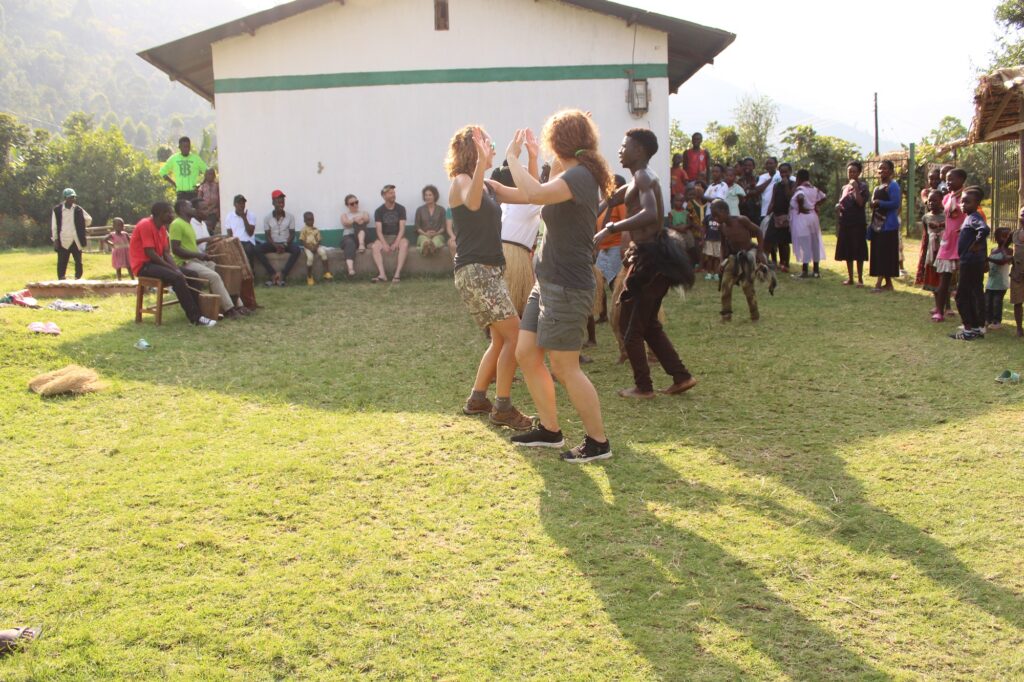
In the afternoon, you will participate in a village walk. In the village walk, you will visit the home experiences to see how people live as you participate in their daily life. You can chose to visit several homes or spend a full day at one home to internalize the Bakonzo life in the mountains. If it is a large group, you can divide to different homes based on choice and interest.
Day 4: Today, you will sleep in and have a late breakfast. After lunch, you will walk to the Community Visitors Centre to spend the rest of the day with the community. The Centre has a local restaurant, bar, gardens and food. Dine out with the locals, drink with them, attend the traditional dances at the Community Visitors Centre, and get the cooking experience.
After trying the local soft and alcoholic drinks, you will retire to your accommodation for dinner and overnight. The optional drinks available include, organic fruit juices, banana wine, and banana Gin (or called Kasese-Kasese) as the strongest alcohol you will try in life. While at the Centre, you can be taken through the demos experience of making them on request.
Day 5: after an early breakfast, guests have a choice to take one last tour in the community before they depart. The options to select from include, the forest walk, the hill trek or the water falls tours. Return in the afternoon and have lunch. After lunch, checkout and depart to the next destination.
This itinerary is not made of stone. it can be taken as whole or be modifies to ones choice, available time and resources. It is available to tailor to ones interest.
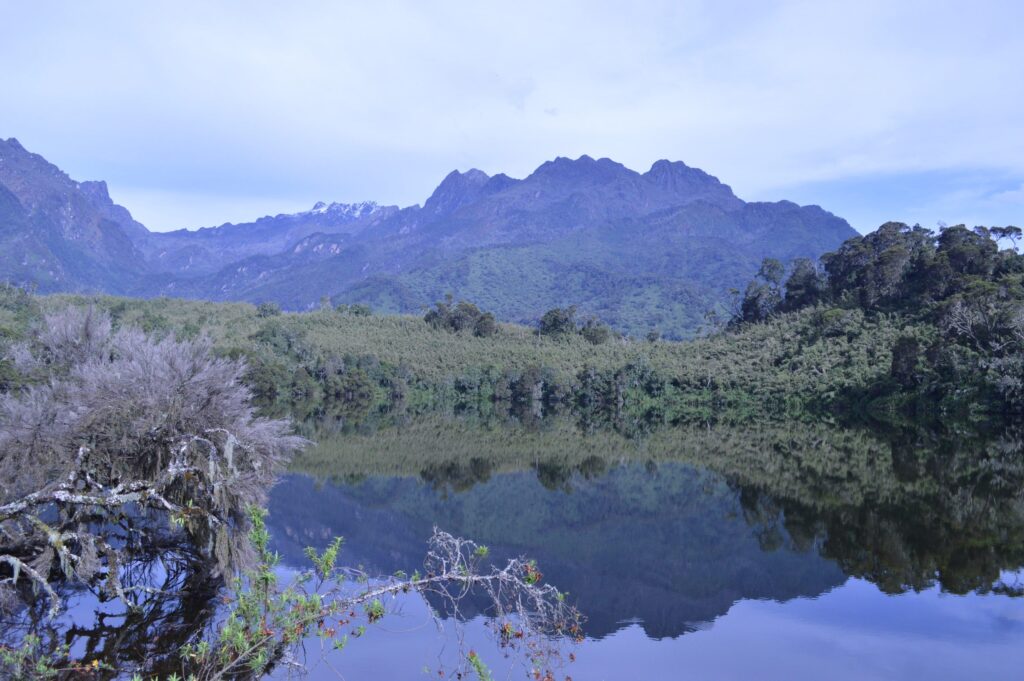
Beyond the five days Ruboni village has a lot more to offer. This village is the best and oldest entry point into Rwenzori mountains national park. With a little more budget, strength and time, visitors can explore the inside of the park using Ruboni village as the base. This can be either on a day trek (nature walk), an overnight trek or multi-day treks.
The the nature walk takes guests either to Buraru diamond trail or to Nyabithaba camp and the surroundings. The overnight trek spends one night in the areas of Nyabithaba, Lake Mahoma or on Mahoma trail. The multi day treks will take visitors up to to ones point of choice on the central circuit trail. The longest multi-day trek can take up to seven days bringing trekkers to Margarita peak, the Highest point at 5109 meters above sea level.
This tree planting tour is an activity you should definitely be part of during your trip around Uganda. Many guests kept saying they wished they could stay longer, after they were locked up by the tickets of the Gorilla trip in Bwindi. Everyone must plan enough days for this activity, equivalent to how much love they have for trees. It is a hands-on tree planting activity where you also learn very may things about tree planting and how the people of Ruboni village relate to the environment.
In this activity in Ruboni village, you see it yourself as travel helps the four pillars of sustainability. Helping the local people, the environment, the local economy, and the traveler. Many have called it, the the most affordable and sustainable tour on their trip.
For just 20$ from your trip budget, and the much love for nature in your spirit, the local youth are made able to prepare the seedlings, the farmers plant the trees on their plots of land up the hills, the local landscape is restored and fertility regained in the long run, the hotels and other local businesses make business from the travelers stay in Ruboni village.
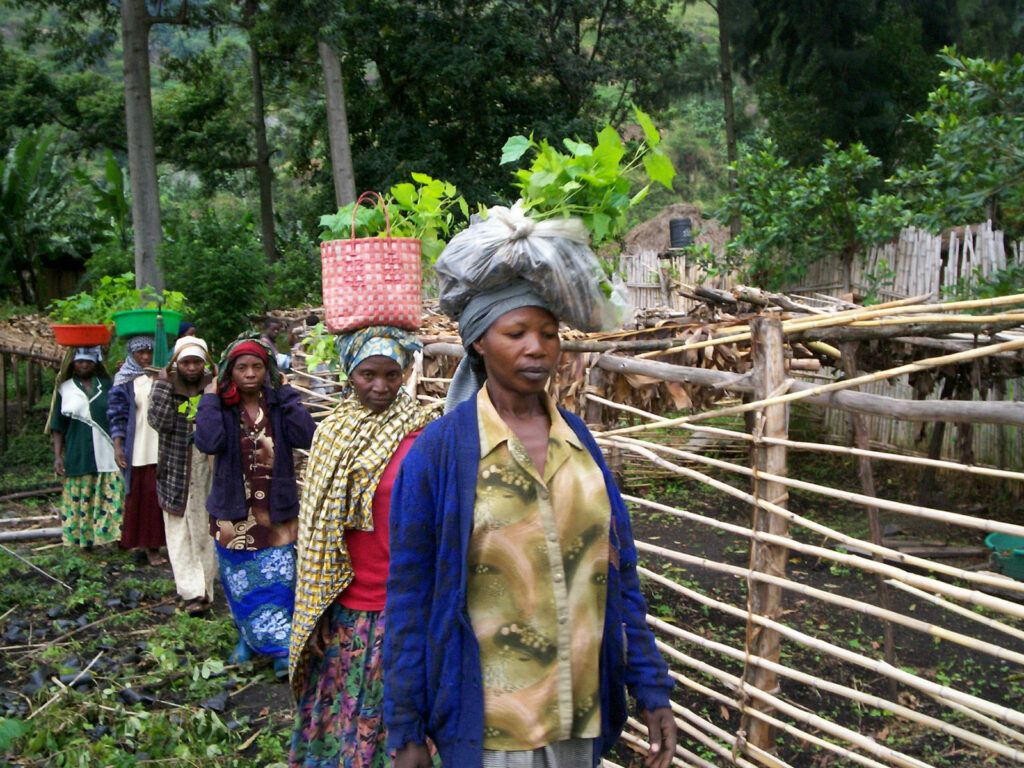
In the process of planting trees, the local women and youth earn some income from transporting and planting trees, and the traveler who participates in the planting of trees get the satisfaction from planting trees and contributing to sustainability.
The Ruboni Tree planting activities consider a mix of indigenous and fruit trees. In future, when the trees have grown, the local people will freely harvest and eat the fruits and wildlife flourishes from the same.
Besides, the tree planting package of 20$ (by the year 2023) included a free camping spot on a safe, secure and clean campground at the Ruboni community visitors Centre. This means if you chose to stay in Ruboni village you can as well mention that you will plant trees and it is all covered, by you choosing to stay at the Community Visitors Centre. At the campground, you can also buy local foods and drinks while mixing with the locals.
Those who want more comfort during this tree planting trip can choose from the many hotels located in Ruboni village. Contact us for the list of these hotels when you reserve space on the tree planting activity. The hotels available range from Luxury like that in the Snow Heights Lodge to budget options.
Greening is a role of everyone living on earth now. travel has made it easy for people to even plant in areas far from their homes. The tree planting experience can be arrange any day, for visitors who come to Rwenzori. It is easy to book and arrange your slot. Even it is possible to arrange on arrival. The trees, gardens and other planters are ready and always planting trees.
However, booking two days or longer in advance will be much better for planning. To note also, Ruboni community implements mass tree planting during the rain seasons of August to December every year. This is good if you want to plan ahead. You can contact us for more information about the tree planting tour and activities in Ruboni village
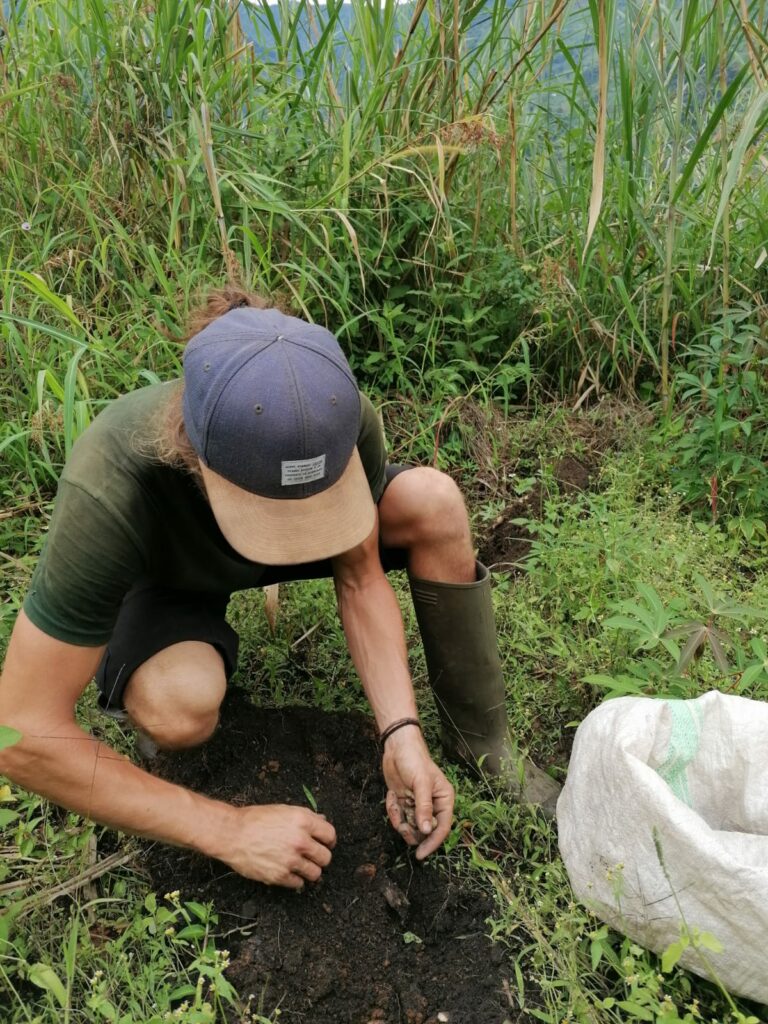
Are you planning to visit Ruboni tourism village, and Rwenzori mountain National park on your Uganda trip? Here are some of the products and gifts that you should not miss when you visit this beautiful village in the Rwenzori foothills, western Uganda.
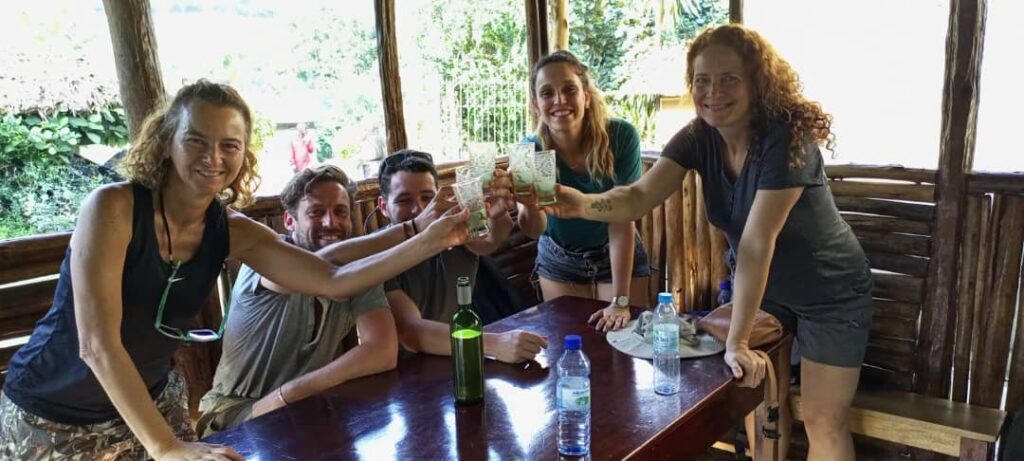
Made from green bananas and other locally grown ingredients, this is a purely organic wine that is made by local women and youth. Banana is a staple across Uganda. The wine from this fruit is made in two flavors; the sweet and dry wines. It is properly packaged and available in the local bars and hotels within the village including Ruboni Community camp
If you like to enjoy it with the locals, you can join the local dance events at the community visitors Centre, where the entrance to the dance gives you a free glass to taste, before you can grab your own bottle. You will enjoy it, especially as it will be from the story of the bananas commonly grown by every farmer. You can also grab a bottle to bring home after the visit.
From the forested areas and from the local apiary, the local farmers collect mountain honey. The taste of this honey is unique. You can also find the rare crystalized hone that makes a very good spread on bread. This honey has been packed in jars, but you van also order large amounts of your choice. Try this honey and you will not regret it. If you buy with the wax, you will enjoy the freshness when you allow it to drain freely from home.
Locally called waragi, super, Kasese or any other names in the different Ugandan dialects; banana Gin is a distillate of ripe bananas. As opposed to the wine, this is clear white and super strong. About 90% alcohol, people like it, just to compare what locals enjoy every day, but I bet you won’t take more than two sips. Many people like to take it as souvenir too. A litre will probably last several years in your house back home unless you host deep throated drunkards.
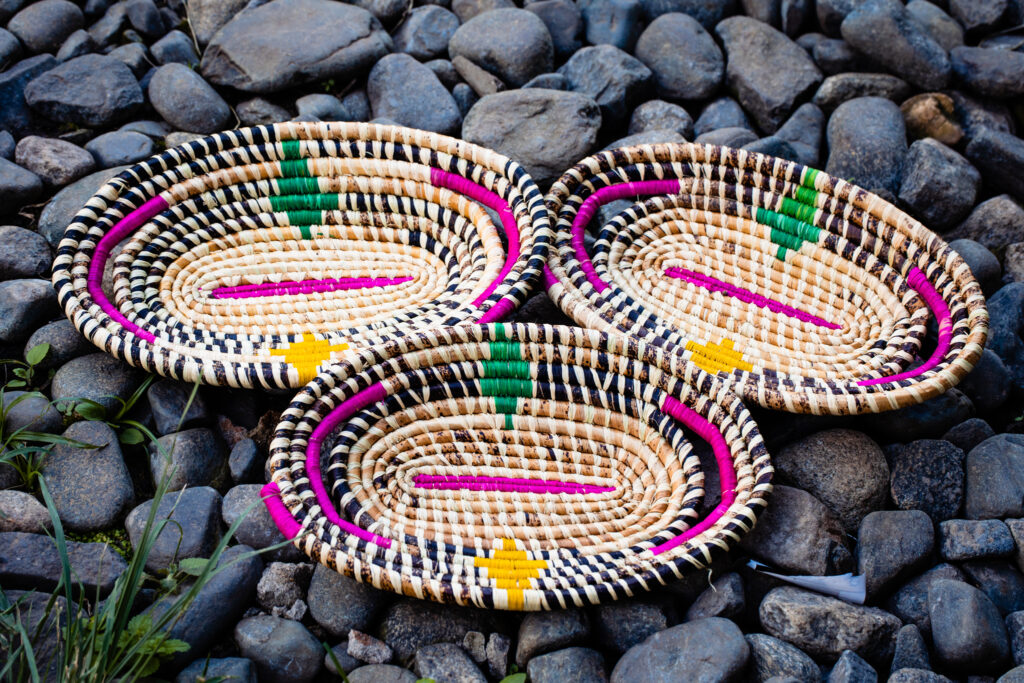
All made by women and youth, the local gifts hops are packed with beautiful products of all sizes. Ranging from jewelry to baskets, toys, textiles and wooden products, you will have a large selection to choose from. it is a super way to support the women of this area, but also to share your trip memories with the people back home.
In Ruboni village, households have kitchen gardens. These gardens serve the households with the daily meal. The kitchen gardens help to relieve extensive traditional farming that leads to cutting local forests.
You will definitely eat some of these vegetables in the hotels or homes you stay. You can also visit or work in these gardens with the households if you visit their home stays. The taste of these love tended organic vegetables is rare to find.
Recently, Ruboni village farmers have adopted vanilla farming as an additional cash crop. However, unlike coffee, vanilla is a tedious crop. The farmers are going through hell to try to master this crop. During your visit, you can join the farmers on the learning journey. You will visit the farmer and see how they going through the process of planting, tending, pollinating, harvesting and curing vanilla beans. To make more sense of this foreign consumed orchid crop, the farmers have started adding value to it. You can be able to buy the cured beans or some extract packed in small containers and use them for baking or cooking back home.
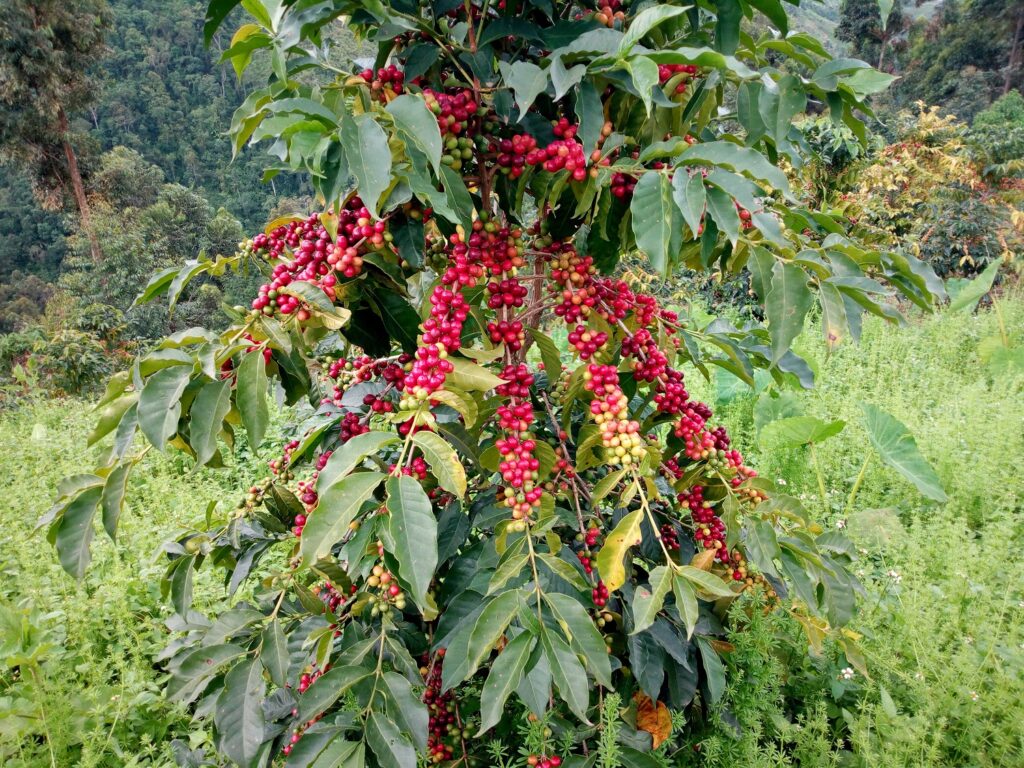
Arabic Coffee is the cash crop if Ruboni village and the Rwenzori Mountain region. Until now, all coffee from this part of Uganda is sold raw for export. Recently; the local women have started drying and processing coffee to make a local drink. The women roast coffee to make a powder that locally drinkable. The flavor of this coffee is fresh from the farm. You can trust that there are no additives and it is done in unpolluted environment. This coffee is packed in different types and amounts where you can buy the amount of your choice, after taking a fresh cup of hot coffee in the village.
The mountain farmers come back with organic fruits such as passion fruits, yellow mulberry, wild tomatoes, and yellow bananas. Fruits that have received the best tropical Mountain climate, No chemicals or fertilizers are applied to them. These fruits are sold in the local markets at Nyakalengijo, Ibanda and Bugoye trading centers or the three markets of Maliba, Ibanda-kyanya, or Kigaramire at the Kasese-fort portal highway.
Also to note; these gifts can all be found in one place, at the community visitors Centre gift shop. This will make it easy to pick without having to move around the community to look for them one by one.
Located in the intriguing mountainous landscapes of Uganda, Ruboni tourism village is the perfect base and gateway for all people who want to do Rwenzori climbing.
The village is located on the trailhead to the oldest and most interesting mountain trail on the Rwenzori Mountains. Ibanda central circuit trail also provides the easiest access to the high peaks for those who have Rwenzori trekking on their activity list.
A four days trek brings climbers to Margarita peak, the highest point in Uganda at 5019 meter above sea level. This same trail also offers great opportunities for shorter non technical treks on the mountains and foothills of Rwenzori.
The local community has created a range of service points that provide support to all sorts of interested climbers and mountaineers who chose Ruboni village as their base. The involvement of the local community in this mountaineering service chain of Rwenzori has greatly transformed the trekking experience on the Rwenzoris.
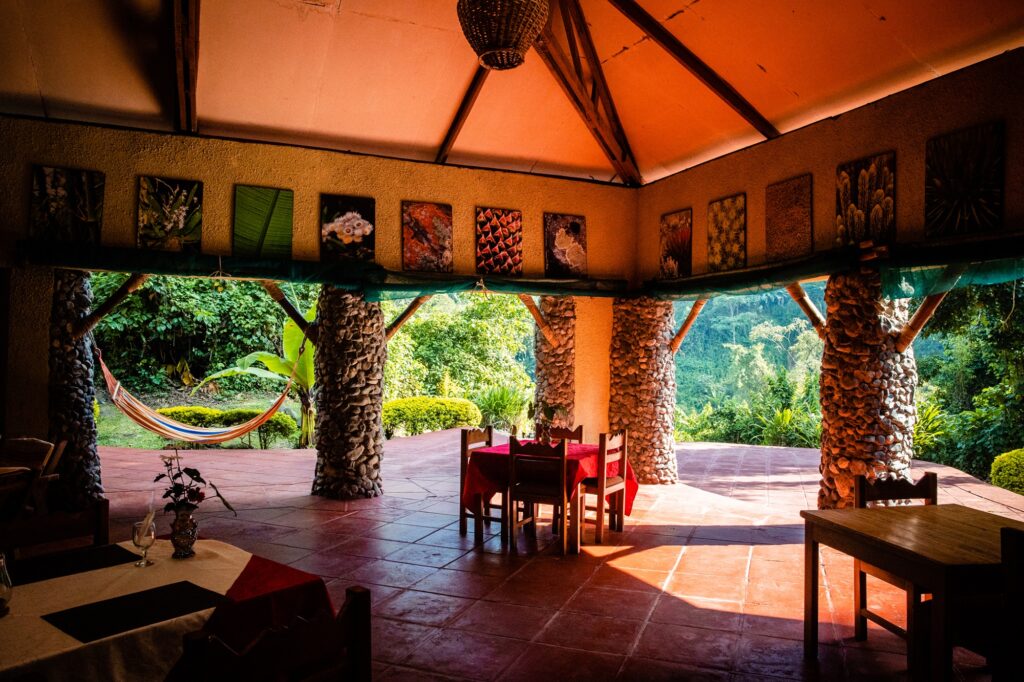
These are the mountaineering service you will find in Ruboni village. you can also view the interactive map of Ruboni village to get more info on the facilities and services that are available for you during your Rwenzori trek
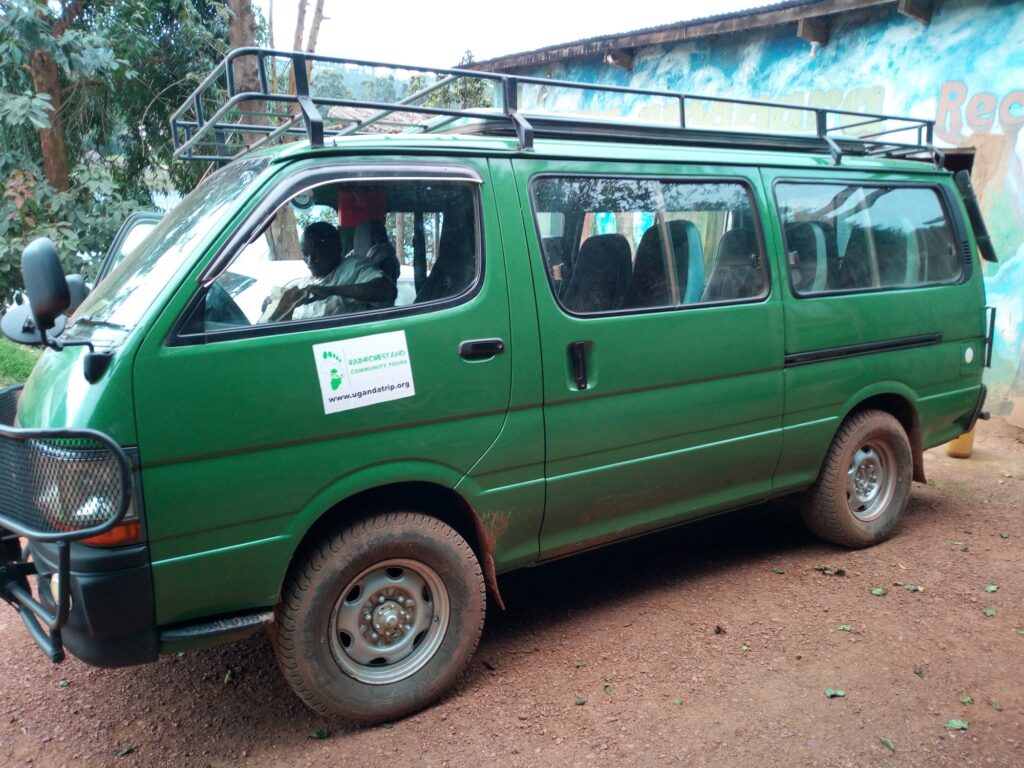
We are at your service whenever you need to travel to Rwenzori. Please feel free to contact us today to book or request a mountaineering package or any of the above services.
Do you want to do Kazinga channel boat wildlife safari? Most travelers visiting Queen Elizabeth will participate in wildlife safaris on Kasenyi tracks and the Kazinga channel boat cruise wildlife viewing experience. Yes, these activities are exceptionally unforgettable. In most cases however, it may be inconveniencing to get them organized harmoniously. The timing, the payment, the information may all come in different dimensions of prices, timing and standards. The elephant home is a perfect solution to this.
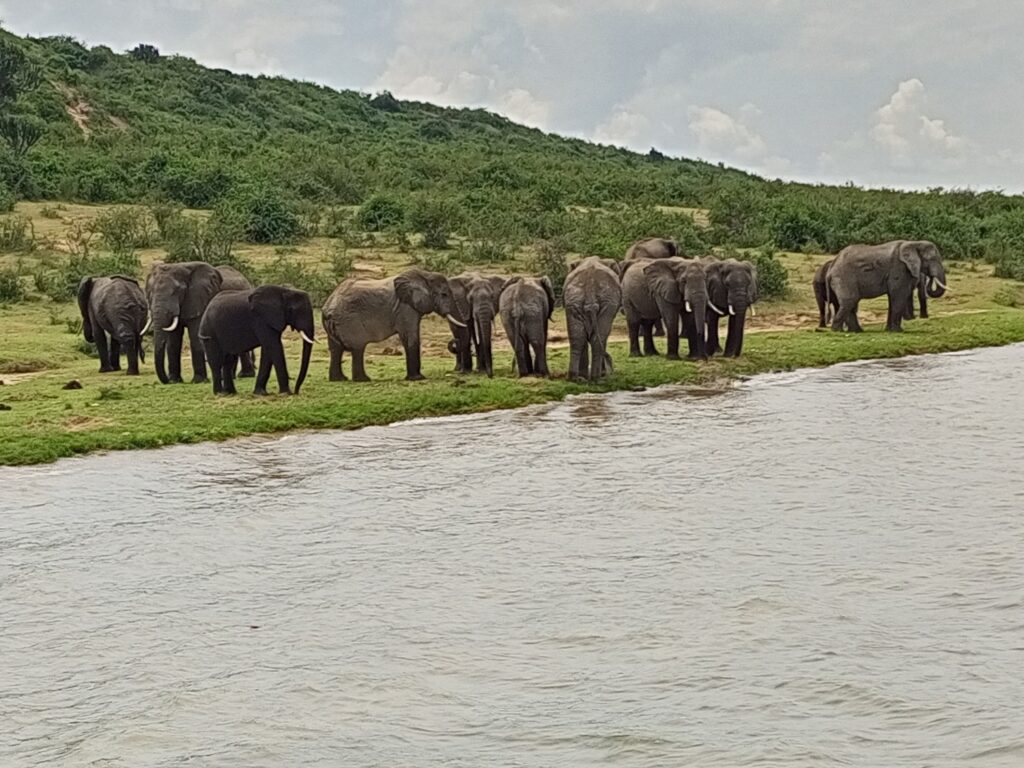
From the elephant home, you have the liberty and flexibility to take a well consolidated queen Elizabeth experience that ties together the key attractions and activities. It is not only cheaper, the lodge also gives guests an opportunity to pays these activities after you do them. This is the community’s assurance of quality services that you won’t find anywhere else in Queen Elizabeth. Cashless payment is an option too.
With the stationed safari guides, safari cars, and own community boat, the elephant home gives a peaceful process of arranging the safari in Queen Elizabeth National Park. Instead of dealing with over five people to arrange the different activities, it saves time and adds value when you save the management costs since the elephant home organizes everything at no additional administration fees.
Wondering how to grab this great opportunity? Just book by contacting the Elephant Home directly through their website, or call us today to make your booking.
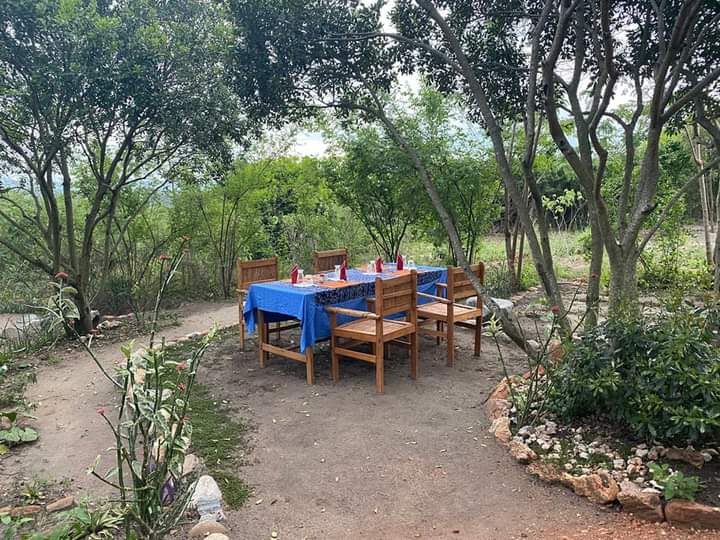
Here is how to get to the Elephant home from Kasese town. It is located at Kikorongo village, 20km on Mbarara road. With public transport, take a matatu going to bwera or mabarara from the taxi park. Tell the driver to stop you at Kikorongo. The elephant home is located 20km from kasese town on mbarara toad. The loadge sits on the right opposite the park, 1km before kikorongo junction. You can also look for the location on google maps.
If it is your first visit to Queen Elizabeth National park, you will find the elephant home very useful. This lodge owned and run by the local community gives you a perfect introduction to the people and wildlife. This is done in the many packages they offer. Kikogorongo village walk, the boda-boda safari, guided wildlife safaris and other encounters. These and many more is why you must stay at the Elephant Home on your first visit since everything is already arranged for you to explore.
The Elephant home gives you the easiest access. Located on the outside of the park, this lodge is accessible by both private and public transport users. On request, they will give you all the travel information or even pick you from anywhere around the country (at a cost)
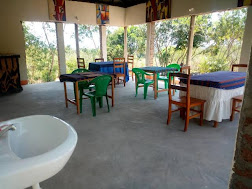
The lodge has a full time open restaurant, making it easy to organize meals and drinks. However, you have to place your order before arrival or shortly after you arrive. Other amenities include, a gifts shop, standby safari cars with safari guides, a community boat cruise on the Kazinga channel, and a self guided walk you can do at leisure, to study the plants and view the landscapes of Queen Elizabeth national park while you stay.
For those who want to easily arrange safaris in Queen Elizabeth National Park, it is at this lodge that you will find Kazinga channel boat cruise and Kasenyi tracks wildlife safaris easily booked in one place.
You can access free WiFi in the restaurant. You will be able to book your next destinations and activities. This makes the elephant home a perfect base of exploring the entire queen Elizabeth region. The Elephant home staff are knowledgeable and are connected to a whole network of tourism destinations around the Rwenzori region. You will get reliable information that will be helpful for your next travel after the stay at the elephant home. Most of our guests going northwards like to visit Rwenzori Mountains at Ruboni Tourism village.
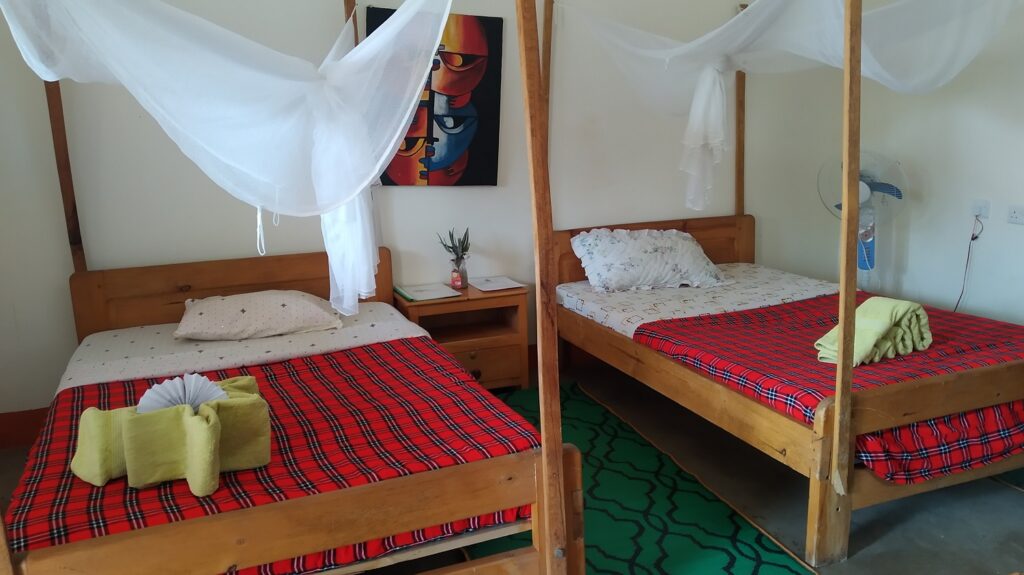
What more do first visitors want? I think you may be wondering about the payment systems. The Elephant home is also cashless. They accept both cash and credit card payments for all activities in queen Elizabeth national park.
Here is how to get to the Elephant home from Kasese town. It is located at Kikorongo village, 20km on Mbarara road. With public transport, take a matatu going to Bwera or Mbarara from the taxi park. Tell the driver to stop you at Kikorongo. The elephant home is located 20km from Kasese town on Mbarara road. The lodge sits on the right opposite the park, 1km before Kikorongo junction. You can also look for the location on Google maps.
After the village attractions are mapped, the undiscovered village in the Rwenzori foothills soon will receive global visibility after being added on open street map. For experienced travelers, Ruboni village is the next surprise destination to you and your friends or family.
For many years, since the 1906, Ruboni village has been open to travelers trekking the Rwenzori Mountains through the central circuit trail. This central circuit trail is the best and closed trail leading to margarita peak, the highest point of Uganda at 5019 meters above sea level. None the less, Ruboni has been hidden from the mainstream travelers. Even people who have come to queen Elizabeth national park, 40km away, didn’t know anything about Ruboni village.
Besides being an easy access to Rwenzori highest peaks, Ruboni village is home to a long list of tourist attractions that every traveler to Uganda must not miss. The beautiful hills, the forests with unique wildlife, the culture and the beautiful rivers with water falls flowing from the Rwenzori Mountains glaciers. The soil in Ruboni is very fertile that everything put on the ground germinates to a lush vegetative health.
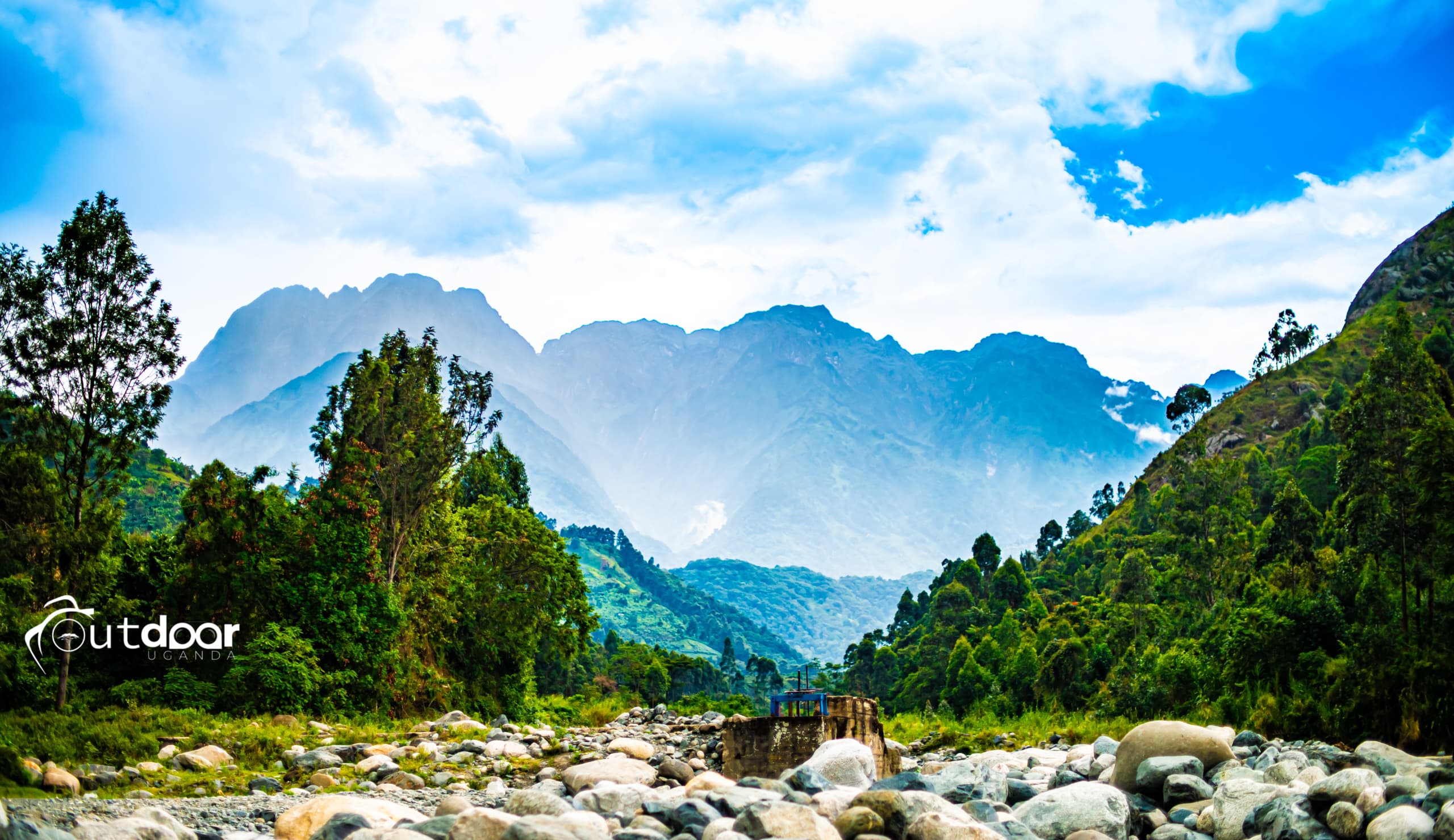
To enhance visitation, in 2002, the community created forest and cultural trails in the village outside the park. These trails take guests to the natural forests, hill tops, households, village farms and waterfalls looking to meet the people and wildlife such as the three horned chameleons. Along with the trails, the community created a tourist lodge on the hillside offering the beautiful views of the portal peaks and foothills. To date, the village has over ten tourist accommodation lodges, home stays and campsites. In total they have up to 100 rooms in all lodges per night.
As the population increases, land output and productivity lowers or due to the impacts of climate change, tourism is a perfect alternative livelihood to the people living in such a beautiful location. Ruboni community has taken the effort to enhance tourism attractiveness of the area by creating the nature and culture reserves, along with a pool of other tourism products. However, lack of availability of the information about Rubonis tourism potential is still a bottle neck to this potential livelihood.
Ruboni village stretches for 18 km from the national park boundary connecting to the Kasese – fort portal road. Kasese – fort portal road is a major tourist route in western Uganda. It connects the major national parks including Queen Elizabeth, Kibale, semuliki, Murchison falls, and Bwindi forest gorilla National Park. However, all guests passing through this road don’t know a thing about Ruboni village attraction and or Rwenzori Mountains.
Ruboni Community Conservation and Development Program (RCCDP), the pioneer of community tourism in this area thought it wise to consolidate and map the tourism attractions of this area. This was made possible with the finanicla support from the Humaniterian Openstreetmap Team (HOT), and with the cooperation of all stakeholders including the local youth, government and private sector.
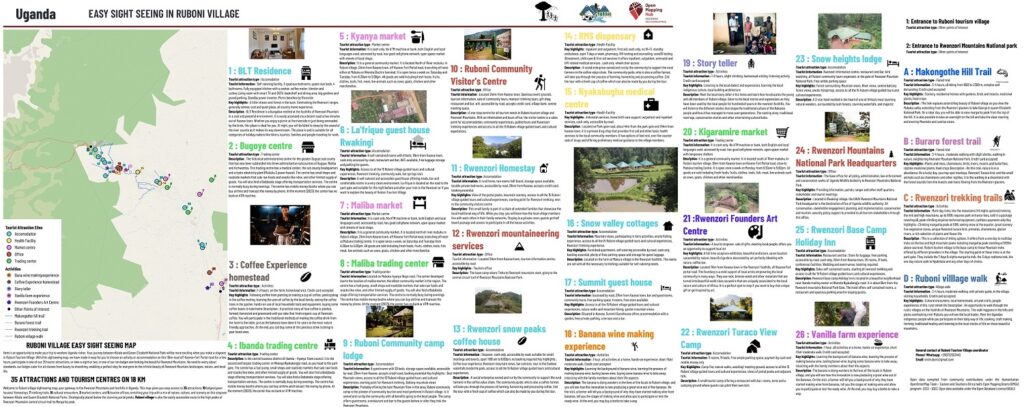
This map has been completed, and currently up and running. The map is available in three versions;
It is worth noting that, the youth of Ruboni have contributed a lot to the development of this map. Actually they have owned the process during and after the mapping process. In total, 40 youth and 18 women were trained and involved in the mapping process. They were also empowered with mapping skills. These youth will manage the map all through, to edit and update the online and digital maps whenever new changes are required. This way, the youth own the process and therefore the tourism products on the map and in the village.
Ruboni village will print a few copies and distribute them to the stakeholders. The printable version shared in PDF is available for download and printing by anybody willing at no charge. The digital interactive version and the one on Openstreetmap are freely available for use online and. On the other hand the map will enhance digitization of tourism in Ruboni village, making the destination available to the travelers wherever they are. The proposal is, the map link will be shared to as many tourism platforms as possible so that it can go out there.
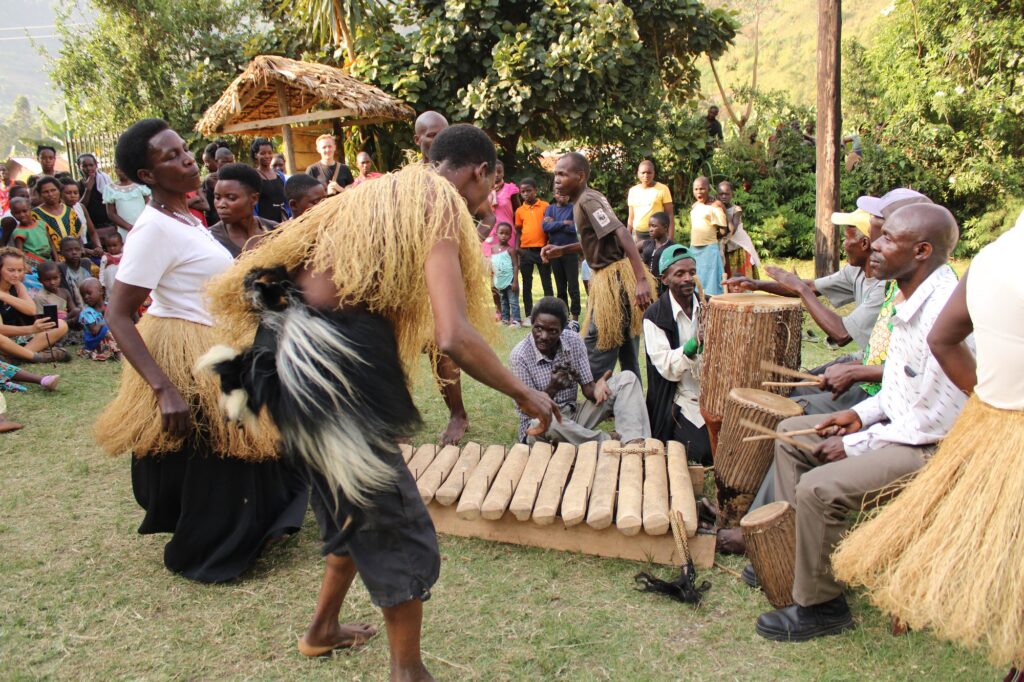
This map enhances inclusiveness for the local tourism businesses. All tourism experiences in Ruboni village will be equally visible despite their ownership. The map will be enhanced by a mobile application that will soon be completed under the same project. This application will deliver the map all salable tourism products such as hotels, tours and stopovers and the tourism information required by the travelers to be able to choose Ruboni village as their destination.
However, an effort is still needed to make this map work for Ruboni village. It needs to reach out to the market. We request you to share the map extensively to ensure that it is accessed and used by the potential visitors to destination Uganda. This will help to position tourism as an alternative sustainable livelihood for Ruboni village residents so that the beautiful landscapes, friendly people, forests, culture encounters and a lot more are set to sustainably enhance community well-being. You can view and share this interactive map here
Ruboni Tourism Village is the ultimate point for your dream trip of Uganda. these travel tips will help you whether you want to climb the highest mountains of Uganda, experience snow at the equator, looking to relax in a serene place with scenic views and friendly people, or exploring the unique social culture encounters of Uganda.
During the visit, you will find a long list of activities to do in areas of adventure in the beautiful natural habitat, community development, and conservation. It is the time to be inspired by the sustainable living, and survival techniques of the indigenous tribe in the Rwenzori foothills.
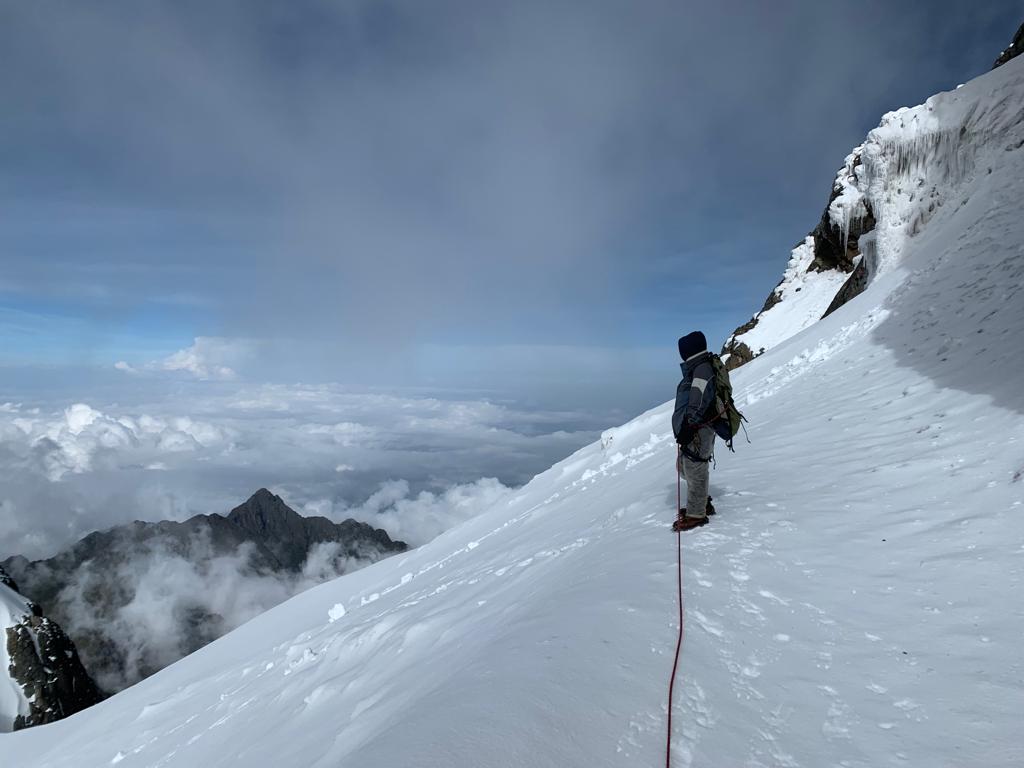
Ruboni village is located at the central circuit and main gate of Rwenzori Mountains National Park. From Ruboni community camp, guests take any length of trek inside Rwenzori mountains National park ranging from one day nature walks, multi-day mountain treks on the lower mountains or trekking to the highest snow capped peaks including mount Stanley where margarita peak stands at 5109 meters above sea level.
Both hotel and Home stay accommodation are available. In the eleven (11) tourist lodges and home stays, and four campgrounds, the village offers 50 guest rooms with over 100 beds and 30 camping space each night. The guest rooms range from self contained rooms, none self contained rooms or shared dorms.
Ruboni Tourism Village provides a unique opportunity to immerse yourself in the local Bakonzo culture. The village is home to the Bakonzo people, who are known for their traditional farming practices, dance performances, and storytelling. Visitors can engage with the community, participate in cultural activities, and gain insights into their way of life.
Ruboni Village is located in the Rwenzori Mountains foothills, Kasese District, Western Uganda, within the Albertine Rift valley.
To access or travel to Ruboni Tourism village, you will either be coming from Kasese town or fort portal town. The direction will depend on where you’re coming from.
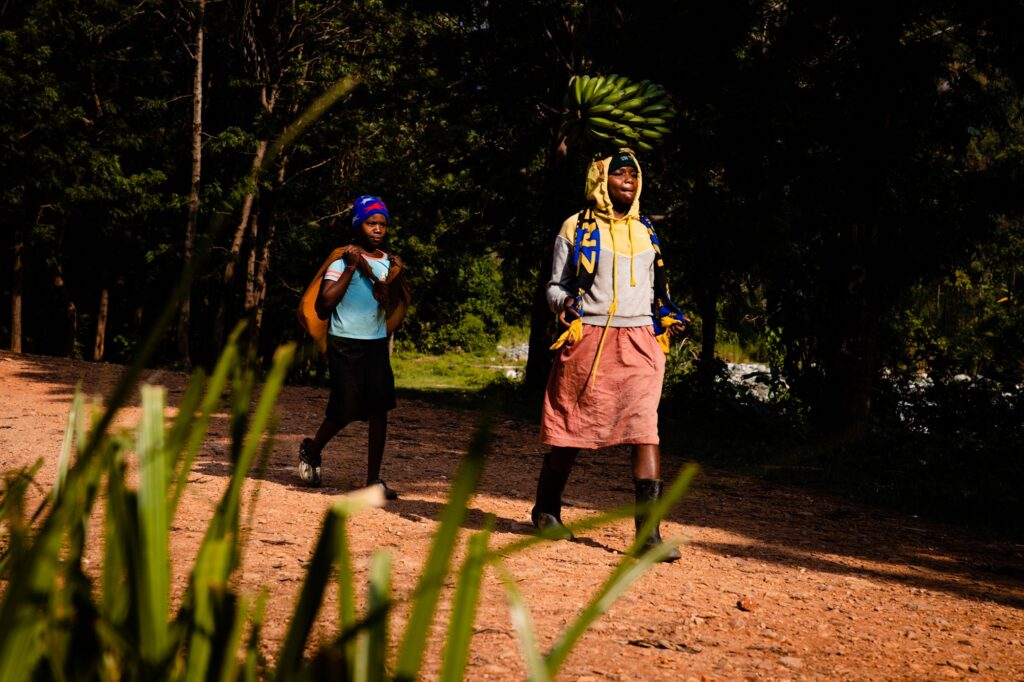
From Kasese town, drive for 10km north on Kasese – Fort portal road. When you reach at Nkenda Electric terminal (Kisanyarazi) looking at the key landmark of many metallic electric poles, turn left and drive on marrum road.
If you’re driving from Fort portal, you will drive for 8km from Hima town and rich mubuku trading centre. Just after crossing River Mubuku, you will branch off right at Nkenda Electric terminal (Kisanyarazi) The key landmark here is the metallic electric poles on the right.
From the branch off, you will drive to your hotel / accommodation or destination in Ruboni Tourism village. Based on your booked hotel, this may take up to 18 km on your way towards the park gate.
You can contact us or use the following information to contact Ruboni Tourism village directly.
Ruboni tourism village is collective social initiative that works towards enhancing tourism benefits to the social environmental and economic needs of Ruboni community in the Rwenzori foothills. With the vision of making tourism a positive force for transformation, rural development, and community well-being, United Nations World tourism Organization (UNWTO) launched the “Best Tourism Villages by UNWTO initiative”in 2021.
This initiative recognizes those villages committing to making tourism a strong driver of their development and well being, and seek to advance the role of tourism in valuing and safeguarding rural villages along with their associated landscapes, knowledge systems, biological and cultural diversity, local values, and activities (agriculture, forestry, livestock, and/ or fisheries, including their gastronomy.
Located in the Rwenzori foothills, Ruboni village was selected and recognized by United Nations World Tourism Organization (UNWTO) as one of the global top 20 villages with the potential to become an outstanding top-tier rural tourism destination. Ruboni is the only tourism village that met this score in Uganda in 2021 at the initial selection.
Based on this, the residents of Ruboni village are working very hard, aiming to Position the local communities to reap from the available tourism opportunities. The village has over nine Hotels and accommodations including, Ruboni community camp, home stays and campsites offering a range of hospitality services, cultural experiences, and tours.

The Ruboni Tourism Village is a rustic territory, nestled in the foothills of Mount Rwenzori in Uganda, is a hidden gem that offers visitors a unique and authentic African experience. This documentary will take viewers on a journey to explore the natural beauty of the region, the rich culture of the local Bakonzo people, and the sustainable tourism initiatives that are helping to support the community.
A visit to Ruboni village will open to you the stunning scenery of Mount Rwenzori, one of Africa’s highest mountain range and a UNESCO World Heritage Site. During the stay, you’ll hear from locals about the mountain’s significance in their culture and learn about the challenges of living in such a remote and rugged environment.
Next, we’ll meet some of the residents of the Ruboni Tourism Village, who will share their stories and provide insights into the daily life and customs of the Bakonzo people. you’ll learn about their traditional music, dance, and art, and see how they have adapted to the changing world while preserving their heritage.
The visit will also highlight the innovative tourism initiatives that have been developed in the village, including guided tours and hikes to the mountain and cultural immersion experiences. We’ll meet some of the local guides and see firsthand the impact that tourism has had on the community, including the creation of jobs and the preservation of natural and cultural resources.
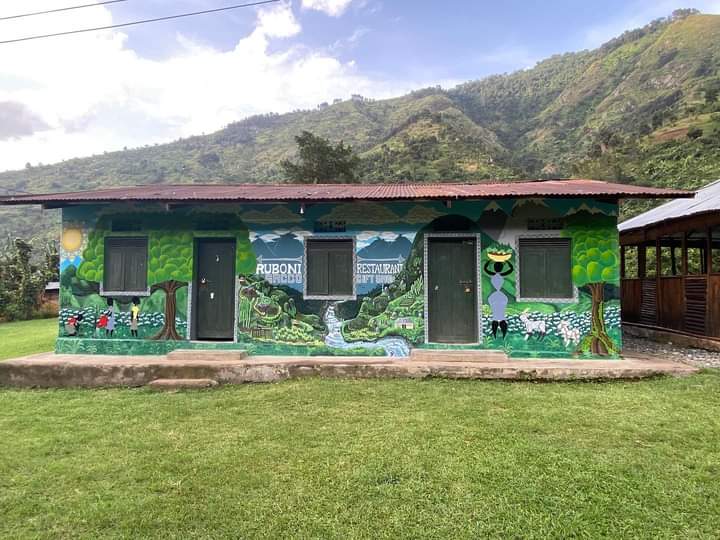
Through the several tourism offices in Ruboni village or your tour operator, you will e able to get more information about the attractions and activities in Ruboni village and how to integrate them in your main tour around Uganda.